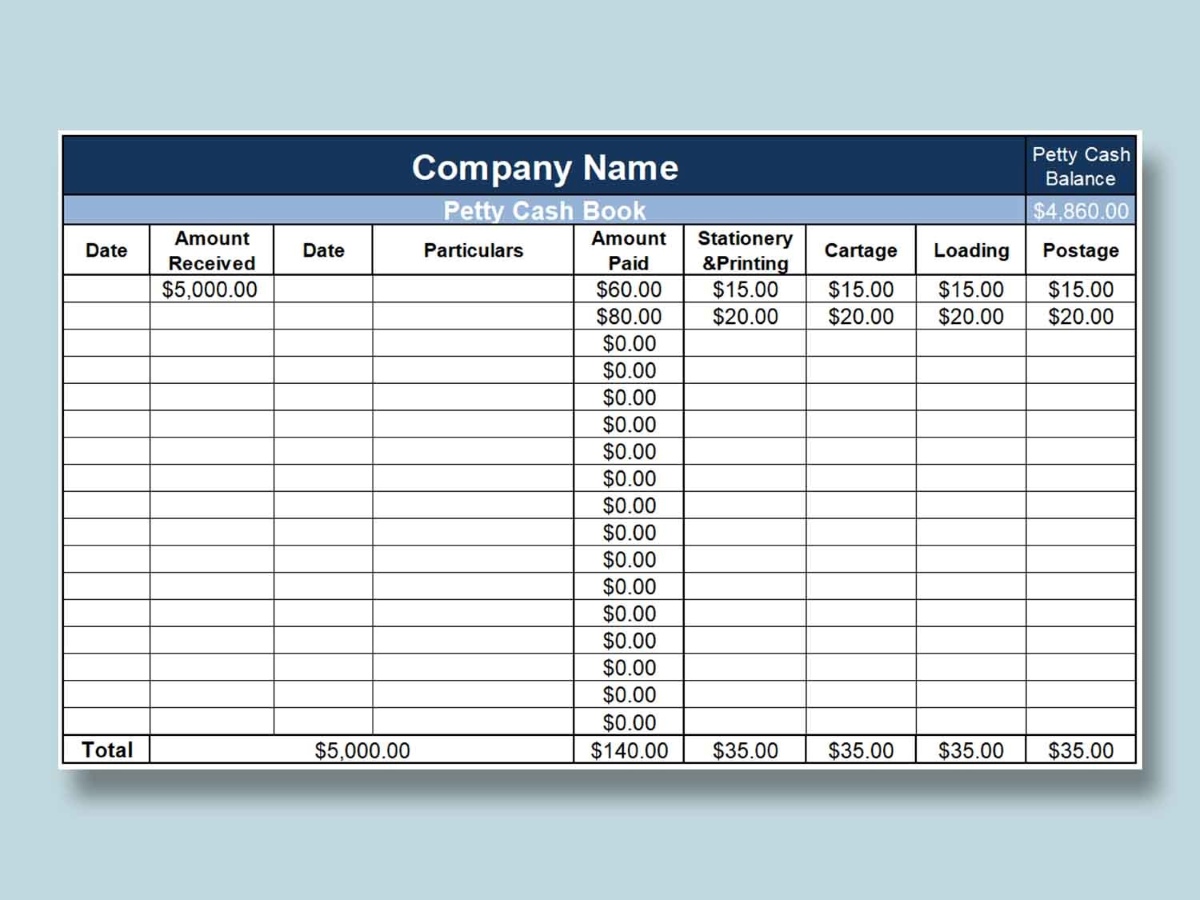Home>Finance>How To Understand Stocks And Shares For Beginners


Finance
How To Understand Stocks And Shares For Beginners
Published: January 19, 2024
Learn the basics of stocks and shares for beginners in the field of finance. Gain a clear understanding of how to navigate the world of investments and make informed decisions.
(Many of the links in this article redirect to a specific reviewed product. Your purchase of these products through affiliate links helps to generate commission for LiveWell, at no extra cost. Learn more)
Table of Contents
- Introduction
- What are Stocks and Shares?
- Understanding Stock Markets
- Types of Stocks and Shares
- How to Buy and Sell Stocks
- Factors Affecting Stock Prices
- Key Stock Market Terminology
- Tips for Beginner Investors
- Risks and Rewards of Investing in Stocks
- Importance of Diversification
- Choosing a Stockbroker
- Conclusion
Introduction
Welcome to the world of stocks and shares! If you’re a beginner looking to dive into the exciting and dynamic world of financial markets, you’ve come to the right place. Stocks and shares are essential components of the investment landscape, offering individuals the opportunity to participate in the growth and success of companies around the globe.
Understanding stocks and shares can seem overwhelming at first, but with the right guidance, you can become a confident investor. This article aims to provide you with a comprehensive overview of stocks and shares, guiding you through the fundamentals and equipping you with the knowledge to make informed investment decisions.
Stocks and shares are essentially ownership or equity in a company. When you buy stocks, you become a shareholder, giving you a stake in the company’s profits and potential growth. Shareholders have the potential to earn returns through dividends and capital appreciation.
The stock market is where stocks and shares are bought and sold. It is a complex and highly regulated marketplace where investors can buy and sell stocks, allocating capital to different companies based on their expectations of future performance.
There are various types of stocks and shares, each with its own characteristics and potential risks and rewards. Common stocks, preferred stocks, and exchange-traded funds (ETFs) are some of the most popular types of investments traded in the stock market.
Buying and selling stocks is carried out through a process known as trading. Investors can trade stocks through online brokerage accounts, which allow them to place buy or sell orders for the stocks they are interested in.
The prices of stocks are determined by numerous factors, including company earnings, economic conditions, investor sentiment, and market demand. Understanding these factors is crucial for investors to make informed decisions regarding the timing and price of their trades.
It is also important for beginner investors to familiarize themselves with key stock market terminology. Concepts such as market capitalization, price-to-earnings ratio, and dividends are essential to understand the performance and valuation of stocks.
Investing in stocks can be a rewarding endeavor, but it is not without risks. As a beginner, it is important to be aware of the risks involved, such as market volatility and the potential for loss of capital. Diversifying your portfolio across different stocks and sectors is a key risk management strategy.
Choosing the right stockbroker is another critical aspect of investing in stocks. A good stockbroker provides a robust trading platform, research tools, and educational resources to help investors make sound investment decisions.
By the end of this article, you will have a solid foundation in understanding stocks and shares, enabling you to embark on your investment journey with confidence. So let’s explore the fascinating world of stocks and shares together!
What are Stocks and Shares?
Stocks and shares are financial instruments that represent ownership in a company. When you buy stocks, you are essentially becoming a partial owner of the company, entitled to a share of its assets and profits.
Shares, also commonly referred to as equities, are divided into units of ownership in proportion to the total number of shares outstanding. These shares can be purchased by individual investors, institutional investors, or even governments.
Stocks and shares are typically issued by publicly traded companies, which are corporations that have decided to offer their ownership to the public by listing their shares on a stock exchange. This allows investors to buy and sell shares of the company on the open market.
When you own stocks, you have the potential to earn returns in two primary ways: dividends and capital appreciation. Dividends are a portion of a company’s profits that is distributed to shareholders as a form of regular income. Capital appreciation, on the other hand, occurs when the value of the shares increases over time. This allows you to sell your stocks at a higher price than what you originally paid, resulting in a profit.
It’s important to note that not all stocks and shares are created equal. There are different classes of stocks, each with its own set of rights and privileges. The most common class of stocks is known as common stocks. When you buy common stocks, you become a shareholder with voting rights and the potential to receive dividends.
Another type of stock is preferred stock. Preferred stockholders have a higher claim on a company’s earnings and assets compared to common shareholders. They are usually entitled to receive a fixed dividend payment before any dividends are distributed to common stockholders.
In addition to individual stocks, another popular investment option is exchange-traded funds (ETFs). ETFs are a collection of stocks that are traded on exchanges, allowing investors to gain exposure to a diversified portfolio of assets with a single investment.
Investing in stocks and shares can provide opportunities for long-term wealth creation and financial growth. However, it is important to carefully research and evaluate companies before investing. Understanding the fundamentals of a company, analyzing its financial health, and keeping up with market trends can help you make informed investment decisions.
Now that you have a basic understanding of what stocks and shares are, let’s delve deeper into how the stock market operates and the different types of stocks and shares available.
Understanding Stock Markets
The stock market is a vast and dynamic marketplace where stocks and shares are bought and sold. It serves as a platform for companies to raise capital by selling ownership in the form of stocks and provides investors with opportunities to buy and sell these stocks.
Stock markets can be either centralized physical exchanges or decentralized electronic platforms. Examples of physical stock exchanges include the New York Stock Exchange (NYSE) and the London Stock Exchange (LSE), where traders gather on a trading floor to execute orders. Electronic exchanges, on the other hand, operate electronically, matching buy and sell orders from investors around the world.
The stock market plays a vital role in the economy, serving as a barometer of economic health and facilitating the flow of capital between investors and companies. It provides a platform for companies to raise funds for expansion and investment, while also offering investors the potential for capital growth through trading stocks.
Stock markets function on the principles of supply and demand. The price of a stock is determined by its supply and the demand for it. When more people want to buy a stock than sell it, the price tends to rise, and when more people want to sell than buy, the price tends to fall.
Price movements in the stock market are influenced by various factors, including company performance, industry trends, economic conditions, geopolitical events, and investor sentiment. It is important to note that stock prices can be volatile and subject to fluctuations, making it essential for investors to stay informed and make decisions based on careful analysis.
In addition to primary market transactions, where companies issue new shares to the public for the first time (known as an initial public offering or IPO), most stock market activity occurs in the secondary market. In the secondary market, investors buy and sell shares among themselves, with the stock market acting as an intermediary facilitating these transactions.
To participate in the stock market, investors typically open brokerage accounts with licensed broker-dealers. These accounts allow investors to place buy or sell orders for stocks, and the broker-dealer executes these orders on their behalf.
Investors can choose between various order types, including market orders, limit orders, and stop orders. Market orders are executed at the prevailing market price, while limit orders allow investors to specify a price at which they are willing to buy or sell a stock. Stop orders, on the other hand, are triggered when a stock reaches a certain price, helping investors protect their gains or limit their losses.
Overall, understanding how stock markets operate is crucial for investors looking to navigate the world of stocks and shares. It is important to stay informed about market trends, conduct thorough research on companies, and make informed investment decisions to maximize potential returns and manage risk effectively.
In the next section, we will explore the different types of stocks and shares available in the stock market, providing you with a deeper understanding of your investment options.
Types of Stocks and Shares
When it comes to investing in stocks, there are various types of stocks and shares available in the market. Each type has its own characteristics and potential rewards, allowing investors to diversify their portfolios and tailor their investments to their specific goals and risk tolerance.
1. Common Stocks: Common stocks are the most prevalent type of stocks in the market. When you buy common stocks, you become a partial owner of the company, with voting rights and the potential to receive dividends. Common shareholders have the opportunity to participate in the company’s growth and success, as well as bear the risks associated with owning equity in the business.
2. Preferred Stocks: Preferred stocks are another type of stock that offers certain advantages over common stocks. Preferred shareholders have a higher claim on the company’s assets and earnings compared to common shareholders. They are usually entitled to receive a fixed dividend payment before any dividends are distributed to common shareholders. However, preferred shareholders usually do not have voting rights.
3. Blue-chip Stocks: Blue-chip stocks refer to shares of large, well-established, and financially stable companies. These companies have a long history of reliable performance and are often leaders in their respective industries. Blue-chip stocks are considered less volatile and generally provide steady dividends.
4. Growth Stocks: Growth stocks are shares of companies that demonstrate above-average growth potential. These companies typically reinvest their earnings into expanding their operations instead of paying dividends. Investors are attracted to growth stocks for their potential capital appreciation, as the value of these stocks can increase significantly over time.
5. Dividend Stocks: Dividend stocks are shares of companies that regularly distribute a portion of their profits to shareholders in the form of dividends. These stocks are favored by income-seeking investors who prioritize receiving regular cash flows. Dividend stocks can provide a steady stream of income and may be more stable in volatile market conditions.
6. Cyclical Stocks: Cyclical stocks are shares of companies whose performance is closely tied to the economic cycle. These companies operate in industries that experience significant fluctuations based on economic conditions. For example, automobile manufacturers and airlines may be considered cyclical stocks. They tend to perform well during periods of economic expansion and struggle during economic downturns.
7. Defensive Stocks: Defensive stocks are shares of companies that are known for their stability and resistance to economic downturns. These companies are typically in industries that provide essential goods and services that people continue to consume regardless of economic conditions. Examples may include companies in the healthcare or consumer staples sectors.
8. Small-Cap, Mid-Cap, and Large-Cap Stocks: Stocks can also be classified based on market capitalization. Small-cap stocks refer to companies with a smaller market value, mid-cap stocks fall in the middle range, and large-cap stocks represent companies with the highest market value. Each category has its own risk and return profile, with small-cap stocks generally offering higher growth potential but also higher risk.
It’s important to note that these classifications are not mutually exclusive, and many stocks may fall into multiple categories. Additionally, the performance of different types of stocks can vary based on market conditions and other macroeconomic factors.
Understanding the different types of stocks and shares can help investors diversify their portfolios and make informed investment decisions. The choice of which types of stocks to invest in will depend on individual preferences, investment goals, and risk appetite.
Now that we have explored the various types of stocks and shares available, let’s move on to the next section, where we will discuss how to buy and sell stocks.
How to Buy and Sell Stocks
Buying and selling stocks may seem intimidating to beginners, but with the right knowledge and guidance, it can be a straightforward process. Here are the steps to buying and selling stocks:
1. Educate Yourself: Before diving into the stock market, take the time to educate yourself about investing basics, including how the stock market works, different investment strategies, and risk management. This will help you make informed decisions and navigate the market with confidence.
2. Choose a Brokerage Account: To buy and sell stocks, you will need to open a brokerage account with a reputable brokerage firm. Look for a broker that offers a user-friendly platform, competitive fees, research tools, and educational resources to support your investment journey.
3. Determine Your Investment Objectives: Clarify your investment objectives, whether it’s long-term growth, income generation, or a combination of both. This will guide your stock selection process and help you align your investments with your goals.
4. Research and Select Stocks: Conduct thorough research on companies you are interested in investing in. Analyze their financial health, industry trends, competitive positioning, and growth prospects. Consider factors like earnings history, market share, and management expertise to make informed stock selections.
5. Place an Order: Once you have chosen the stocks you want to buy, place an order with your chosen brokerage. You can place market orders, which will be executed at the current market price, or limit orders, where you specify the maximum price you are willing to pay.
6. Monitor Your Investments: Keep a close eye on your investments by regularly monitoring stock performance and staying updated on market news and company developments. This will help you make informed decisions to buy, sell, or hold your stocks.
7. Selling Stocks: When it comes time to sell your stocks, you can place a sell order through your brokerage account. You can either specify a price you want to sell at (limit order) or sell at the prevailing market price (market order).
8. Consider Tax Implications: Be aware of the tax implications of buying and selling stocks. Consult with a tax advisor to understand how capital gains and losses are taxed in your jurisdiction and plan your trades accordingly.
9. Evaluate and Adjust: Regularly review and evaluate your portfolio’s performance and make adjustments as needed. This could involve rebalancing your holdings, adding new stocks, or selling underperforming stocks.
Remember, investing in stocks involves risks, including the potential loss of capital. It’s crucial to do your due diligence, diversify your portfolio, and invest within your risk tolerance.
By following these steps and staying informed, you can successfully buy and sell stocks, participating in the exciting world of investing.
Next, we will explore the factors that influence stock prices, helping you understand the dynamics of the market.
Factors Affecting Stock Prices
Stock prices are influenced by a myriad of factors that can impact supply and demand dynamics in the market. Understanding these factors is crucial for investors looking to make informed decisions and navigate the stock market. Here are some key factors that can affect stock prices:
- Company Earnings: The financial performance of a company plays a significant role in determining its stock price. Positive earnings growth and consistent profitability can attract investors and drive up stock prices. Conversely, poor earnings or financial mismanagement can lead to a decline in stock prices.
- Economic Conditions: Economic factors, such as GDP growth, interest rates, inflation, and unemployment, can heavily influence stock prices. A strong economy typically boosts corporate profits, leading to higher stock prices, while economic downturns can depress stock prices.
- Industry Trends: The performance and prospects of specific industries can impact the stock prices of companies operating within those sectors. Changes in consumer preferences, technological advancements, regulatory developments, and competitive dynamics can all affect industry trends and consequently, stock prices.
- Company News and Events: Significant news and events related to a company, such as product launches, mergers and acquisitions, management changes, or legal issues, can have a direct impact on its stock price. Positive news can drive stock prices up, while negative news can lead to declines.
- Market Sentiment: Investor sentiment and market psychology can greatly influence stock prices. Optimism and confidence in the market can drive prices higher, while fear and uncertainty can lead to sell-offs and price declines.
- Interest Rates: Interest rates set by central banks can impact stock prices. Lower interest rates tend to make stocks more attractive as an investment compared to bonds and other fixed-income securities, leading to upward pressure on stock prices. Conversely, rising interest rates may lead to lower stock prices as investors seek higher yields in fixed-income investments.
- Corporate Actions: Corporate actions, such as stock splits, dividends, and share buybacks, can influence stock prices. Stock splits increase the number of shares outstanding, potentially making the stock more affordable and attractive to investors. Dividend announcements can also impact stock prices, as higher dividends may attract more investors.
- Global Events and Geopolitical Factors: Global events, such as political tensions, trade disputes, natural disasters, or pandemics, can have wide-ranging effects on the stock market. These events can disrupt supply chains, affect consumer demand, and create market volatility.
- Investor Behavior: The actions and decisions of investors themselves can impact stock prices. Trading volume, buying and selling patterns, and trends in investor behavior can create momentum and influence stock prices in the short term.
It’s important to note that the impact of these factors can vary depending on the specific company, industry, and market conditions. Additionally, stock prices are influenced by a complex interplay of multiple factors, making it challenging to predict short-term price movements with certainty.
Successful investors analyze these factors, conduct thorough research, and develop a long-term perspective when making investment decisions. By understanding the factors that affect stock prices, you can stay informed and make more informed investment choices.
Next, we will explore key stock market terminology to further enhance your understanding of stocks and shares.
Key Stock Market Terminology
As a beginner navigating the world of stocks and shares, it’s important to familiarize yourself with key stock market terminology. Understanding these terms will help you better comprehend market dynamics and make more informed investment decisions. Here are some essential terms to know:
- Stock Exchange: A stock exchange is a marketplace where stocks and other securities are bought and sold. Examples include the New York Stock Exchange (NYSE) and the NASDAQ.
- Ticker Symbol: A ticker symbol is a unique series of letters representing a particular stock on an exchange. For example, the ticker symbol for Apple Inc. is “AAPL”.
- Market Capitalization: Market capitalization refers to the total value of a company’s outstanding shares. It is calculated by multiplying the current stock price by the total number of outstanding shares.
- Dividend: A dividend is a payment made by a company to its shareholders out of its profits. It is usually expressed as a per-share amount and is distributed regularly or on an ad-hoc basis.
- Earnings Per Share (EPS): EPS is a financial metric that represents a company’s profitability. It is calculated by dividing a company’s net earnings by the number of outstanding shares.
- Price-to-Earnings Ratio (P/E Ratio): The P/E ratio compares a company’s stock price with its earnings. It is calculated by dividing the current stock price by the company’s earnings per share. The P/E ratio can indicate whether a stock is overvalued or undervalued.
- Market Order: A market order is an order to buy or sell a stock at the prevailing market price. The transaction is executed as quickly as possible.
- Limit Order: A limit order is an order to buy or sell a stock at a specified price or better. It allows investors to control the maximum price they are willing to pay or the minimum price they are willing to sell at.
- Bid Price: The bid price is the highest price that a buyer is willing to pay for a stock at a given moment.
- Ask Price: The ask price is the lowest price at which a seller is willing to sell a stock at a given moment.
- Volume: Volume refers to the number of shares traded in a particular stock or market during a specified period. Higher volume generally indicates greater liquidity and investor interest.
- Volatility: Volatility measures the degree of price fluctuation in a stock or market. Higher volatility implies larger price swings, which can present both risks and opportunities for investors.
- Bull Market: A bull market refers to a period of sustained upward movement in stock prices, generally characterized by optimism and positive investor sentiment.
- Bear Market: A bear market is the opposite of a bull market, characterized by a sustained decline in stock prices and a pessimistic investor sentiment.
- Portfolio: A portfolio is a collection of investments, including stocks, bonds, and other securities, held by an individual or an institution.
These terms represent just the tip of the iceberg when it comes to stock market terminology. As you continue your investing journey, you will encounter many more concepts and terms that will deepen your understanding of the market.
Now that you are familiar with some key stock market terminology, let’s move on to the next section, where we will provide some valuable tips for beginner investors.
Tips for Beginner Investors
As a beginner investor, it’s important to approach the stock market with a sound strategy and a focus on long-term success. While investing in stocks can be rewarding, it also comes with risks. Here are some valuable tips to help you navigate the stock market:
- Set Clear Goals: Define your investment goals and establish a clear plan. Determine your time horizon, risk tolerance, and desired returns to align your investment strategy with your financial objectives.
- Do Your Research: Thoroughly research companies before investing in their stocks. Analyze financial statements, industry trends, competitive positioning, and future growth prospects. Develop a solid understanding of the companies in your portfolio.
- Diversify Your Portfolio: Diversification is key to managing risk. Spread your investments across different stocks, sectors, and asset classes to reduce the impact of any single investment. Diversification helps to protect your portfolio from sudden market downturns.
- Invest for the Long Term: Stock market investing is a long-term game. Avoid trying to time the market or chasing short-term trends. Instead, focus on investing in companies with strong fundamentals and holding onto your investments for the long term to benefit from compounding returns.
- Stay Informed: Keep yourself updated on market news, economic trends, and company developments. Stay informed about the latest developments that may impact your investments. Regularly review your portfolio and make adjustments as needed.
- Manage Your Emotions: Emotional decision-making can lead to poor investment choices. Avoid making impulsive decisions based on short-term market fluctuations or speculative rumors. Instead, make rational decisions based on careful analysis and your investment strategy.
- Start with Simplicity: As a beginner, start with straightforward investment strategies. Consider index funds or exchange-traded funds (ETFs) that offer exposure to a broad market index. These options provide diversified holdings and can be a good foundation for your portfolio.
- Utilize Dollar-Cost Averaging: Dollar-cost averaging is an investment strategy where you invest a fixed amount of money at regular intervals, regardless of market conditions. This approach allows you to buy more shares when prices are low and fewer shares when prices are high, potentially reducing the impact of market volatility.
- Consider Dividends: Dividend-paying stocks can provide a steady stream of income. Consider including dividend stocks in your portfolio to receive regular cash flow, especially if you are seeking income from your investments.
- Seek Professional Advice if Needed: If you feel overwhelmed or unsure, consider seeking advice from a financial advisor. They can provide guidance tailored to your specific financial situation, goals, and risk tolerance.
Remember, investing in the stock market involves risks, and there are no guarantees of returns. Be patient, disciplined, and maintain realistic expectations. Rome wasn’t built in a day, and neither is a successful investment portfolio.
By following these tips and continuously educating yourself about investing, you can increase your chances of making informed investment decisions and achieving your financial goals.
In the next section, we will discuss the risks and rewards of investing in stocks, helping you develop a balanced perspective on investing.
Risks and Rewards of Investing in Stocks
Investing in stocks offers both potential rewards and risks. Understanding and managing these risks is essential for any investor. Let’s explore the risks and rewards associated with investing in stocks:
Rewards:
1. Potential for Capital Appreciation: One of the primary reasons investors choose stocks is for the potential to earn capital appreciation. If the value of the stocks you own increases over time, you can sell them at a higher price and make a profit.
2. Dividends: Many stocks pay dividends, which are regular cash payments distributed to shareholders. Dividend stocks can provide a reliable stream of income and are favored by income-seeking investors.
3. Ownership and Influence: Buying stocks means becoming a partial owner of a company. As a shareholder, you have certain rights, such as voting in company decisions, attending annual general meetings, and having a say in the company’s affairs.
4. Portfolio Diversification: Stocks allow you to diversify your investment portfolio. By investing in different sectors, industries, and companies, you spread your risk and potentially enhance your returns.
Risks:
1. Volatility and Market Fluctuations: The stock market is inherently volatile, and stock prices can fluctuate significantly in response to various factors. Market fluctuations can lead to short-term losses and may require a long-term perspective to navigate successfully.
2. Company-Specific Risks: Investing in individual stocks carries company-specific risks. Poor business performance, management issues, or unexpected events can adversely impact the stock price of a particular company.
3. Market Risk: Macro-level factors, such as economic downturns, political instability, or global events, can affect the overall performance of the stock market. Broad market declines can result in portfolio losses.
4. Liquidity Risk: Some stocks, particularly those with smaller market capitalization, may have lower trading volumes and limited liquidity. This can make it challenging to buy or sell shares at the desired price, potentially leading to higher transaction costs.
5. Inflation Risk: Inflation erodes the purchasing power of money over time. If the rate of inflation outpaces the returns on your investments, the real value of your investment may decrease.
6. Interest Rate Risk: Changes in interest rates can impact stock prices. Rising interest rates can increase borrowing costs for companies, potentially leading to lower profits and decreased stock prices.
7. Currency Risk: If you invest in international stocks, fluctuations in currency exchange rates can impact your returns. Currency movements can either amplify or reduce your gains or losses.
While investing in stocks can yield significant rewards, it’s important to assess and manage risks. Diversifying your portfolio, conducting thorough research, and maintaining a long-term perspective are strategies that can help mitigate risks while maximizing potential rewards.
Remember that investing in stocks involves uncertainty, and past performance is not indicative of future results. Regularly reassess your investment strategy and stay informed to make necessary adjustments based on changing market conditions.
Now let’s explore the importance of diversification in your investment portfolio.
Importance of Diversification
Diversification is a fundamental principle of investing that entails spreading your investments across different asset classes, sectors, industries, and geographic regions. It is a risk management strategy that helps reduce the impact of any single investment on your overall portfolio. Here’s why diversification is important:
Minimization of Risk: Diversification is the key to minimizing the impact of specific risks. By investing in a variety of assets, you spread the risk across different investments. If one investment performs poorly, others may perform well or remain unaffected, reducing the overall impact on your portfolio.
Protection Against Market Volatility: Different asset classes may perform differently in various market conditions. For example, during economic downturns, some sectors may suffer while others remain resilient. Diversifying your portfolio allows you to benefit from the potential gains in one area while mitigating losses in another.
Enhancement of Returns: Diversification can potentially enhance your overall returns. By investing in multiple asset classes, you can access various opportunities for growth. When one investment lags, others may have better performance, offsetting any losses and contributing to the overall return of your portfolio.
Preservation of Capital: Diversification helps protect your capital from significant erosion. By avoiding over-concentration in a single investment, industry, or sector, you reduce the risk of losing a substantial portion of your portfolio due to unexpected events, poor performance, or industry-specific challenges.
Opportunity for Exposure to Different Markets: Diversification enables you to participate in various markets and take advantage of global economic opportunities. By investing in international stocks or assets, you can spread your investments across different economies, currencies, and geopolitical landscapes.
Long-Term Stability: Diversification promotes long-term stability in your investment portfolio. It helps to balance the potential for higher-risk investments with more conservative ones, providing a smoother and more consistent performance over time.
However, it’s important to note that diversification does not guarantee profits or protect against all losses. It is still essential to conduct thorough research, evaluate investments on their own merits, and monitor your portfolio regularly.
When diversifying your portfolio, consider factors such as asset allocation, risk appetite, investment goals, and time horizon. This will help you tailor your diversification strategy to suit your specific needs and preferences.
By diversifying your investments, you can manage risk, increase potential returns, and create a resilient portfolio that is better suited to withstand market volatility and economic uncertainties.
Now, let’s move on to discussing the process of choosing a stockbroker, an important step for investors looking to participate in the stock market.
Choosing a Stockbroker
When it comes to investing in stocks, choosing the right stockbroker is a crucial step. A stockbroker serves as your intermediary in buying and selling stocks, providing access to the stock market and facilitating your investment transactions. Here are key factors to consider when choosing a stockbroker:
1. Reputation and Reliability: Look for a stockbroker with a reputable and reliable track record. Research the broker’s reputation, longevity in the industry, and any regulatory actions or complaints against them. Seek guidance from experienced investors or consult online reviews and ratings.
2. Brokerage Fees and Account Minimums: Compare the fees and commissions charged by different stockbrokers. Consider the brokerage fees for executing trades, account maintenance fees, inactivity fees, and any other applicable charges. Evaluate whether the fees align with your investment budget and trading frequency. Additionally, check if there are minimum deposit requirements to open an account.
3. Trading Platform and Tools: Assess the stockbroker’s trading platform and tools. A user-friendly and intuitive platform is vital for executing trades comfortably. Look for features like real-time quotes, customizable charts, research reports, and educational resources. Advanced tools such as technical analysis indicators or screeners can be beneficial for more experienced investors.
4. Research and Market Analysis: Consider the quality and depth of research and market analysis provided by the stockbroker. Research reports, expert analysis, and market insights can assist you in making informed investment decisions. A stockbroker with robust research capabilities can be valuable, especially if you are new to investing or require guidance.
5. Customer Service: Evaluate the responsiveness and accessibility of the stockbroker’s customer service team. Excellent customer service is essential, particularly if you encounter any issues or have questions regarding your account or trades. Test their customer service through inquiries or by reading reviews from existing clients.
6. Security and Regulation: Ensure that the stockbroker is regulated by the relevant financial authorities. Regulatory oversight helps protect investors’ interests and ensures that ethical standards are followed. Additionally, check if the stockbroker offers secure practices, such as two-factor authentication and data encryption, to safeguard your personal and financial information.
7. Additional Services: Consider any additional services offered by the stockbroker, such as access to initial public offerings (IPOs), retirement accounts, educational materials, or investment advisory services. These services can add value and convenience to your investment experience.
8. Ease of Account Management: Evaluate the stockbroker’s account management features. Look for options to easily deposit or withdraw funds, convenient account statements, and access to your portfolio’s performance. Online account management should be straightforward, providing a clear overview of your investments and transaction history.
By carefully evaluating these factors, you can choose a stockbroker that fits your investment needs and preferences. Remember that you are entrusting your funds and investment decisions to your stockbroker, so it’s important to feel confident and comfortable with their services.
Take the time to conduct thorough research, compare different options, and consider seeking recommendations from trusted sources. A well-suited stockbroker can be a valuable partner on your investing journey.
Now that you understand how to choose a stockbroker, let’s conclude with a summary of the key points covered in this article.
Conclusion
Congratulations! You have now gained a solid understanding of stocks and shares, providing you with the knowledge to venture into the world of investing with confidence. Let’s recap the key points covered in this article:
We began by introducing you to stocks and shares, explaining how they represent ownership in companies and offering the potential for returns through dividends and capital appreciation. We explored the functioning of stock markets as marketplaces for buying and selling stocks and discussed different types of stocks, including common stocks, preferred stocks, and ETFs.
You learned about the process of buying and selling stocks, including the importance of conducting research, selecting a brokerage account, and placing orders. We also delved into the factors that influence stock prices, such as company earnings, economic conditions, industry trends, and market sentiment.
Understanding key stock market terminology, such as ticker symbol, market capitalization, and dividend, helped you navigate the intricacies of the market. We provided valuable tips for beginner investors, emphasizing the importance of setting goals, diversifying your portfolio, staying informed, and managing emotions.
Recognizing the risks and rewards of investing in stocks is crucial. We discussed the potential for capital appreciation, dividends, ownership rights, and portfolio diversification as rewards. Conversely, we outlined the risks associated with volatility, company-specific challenges, market fluctuations, and external factors.
To mitigate risks and enhance potential returns, we emphasized the significance of diversification in your investment portfolio. Spreading your investments across different asset classes, sectors, and geographical regions can help manage risk and capture opportunities for growth.
Finally, we outlined the factors to consider when choosing a stockbroker, including reputation, fees, trading platform, research, customer service, security, and additional services.
As you embark on your investment journey, remember that investing in stocks requires patience, discipline, and a long-term perspective. Continue to educate yourself, stay informed about market trends, and regularly review and adjust your portfolio as needed.
Now that you are equipped with the necessary knowledge, it’s time to take action. Start by setting clear investment goals, opening a brokerage account, and diversifying your portfolio. Remember, investing is a journey, and with time and experience, you’ll continue to enhance your skills as an investor.
Best of luck as you explore the world of stocks and shares!













